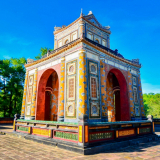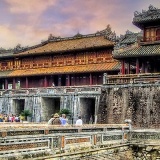Hue Citadel
Seek more information and experience about the Vietnam royal dynasty? Hue Imperial Citadel is exactly where you need to come.
The Complex of Hue Citadel is a UNESCO World Heritage Site, which consists of a massive complex featuring hundreds of monuments and ruins from the Vietnam War. Entering Hue Citadel, travelers may visit the Forbidden Purple City, the Imperial City, royal tombs, flag tower, pagodas, temples, library, and museum, which offer much interesting information and experience.
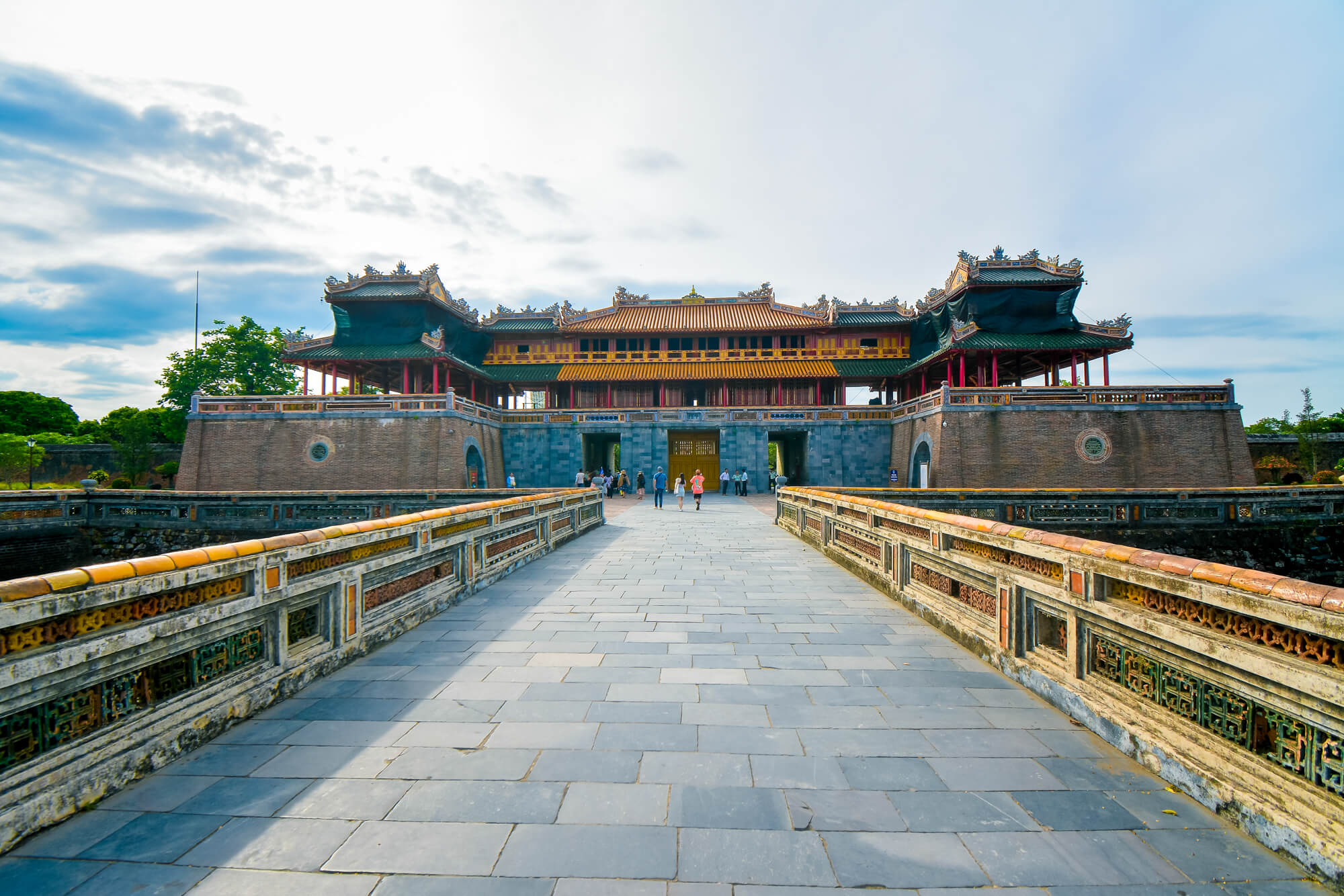
Thai Hoa Temple in Hue Citadel
Hue was founded as Vietnam capital by Gia Long – the first King of the Nguyen Dynasty in 1802. Constructed in 1804, the Hue Imperial Citadel was Vietnam’s last royal dynasty’s residence for 143 years. It held the royal position for 9 Nguyen Dynasties until 1945. Unfortunately, the Imperial Citadel today is just a shadow of what it once was. Most temples, pavilions, walls, and gates were severely damaged during skirmishes with the French in 1947 and destroyed by American forces during the Tet Offensive (a major military campaign of America – Vietnam War in 1968). Including more than 160 buildings originally, only 20 buildings survived from severe damages under French rule and Vietnam War. Fortunately, in 1993, UNESCO designated the Citadel as one point of the World Heritage List, which enhanced Hue and the Citadel’s position in Vietnam tourism development.
The very first stop is the exterior circle – the Kinh Thanh Hue (Hue Capital Citadel). Square shaped with almost 10km in circumference, it is 6m high with 24 bastions established on the walls for defensive purposes. Connecting with Tran Binh Bastion, the Citadel has an ancillary gate called the Tran Binh Mon (means Peaceful Protector Gate).

The big square in front of the main gate
The second circle is the Hoang Thanh (means Royal Citadel), which is the most important part of the Citadel. The Citadel is more than 600m long for each side, built with 4m-high and 1m-thick bricks. Royal Citadel consists of more than 100 fascinating architectural works divided into 4 sections: Section of Ngo Mon Gate and Thai Hoa Palace (used for various grand ceremonies); Section for placing shrines of Nguyen Dynasty’s Kings; Section of internal affairs office; and Section of Kham Van Palace and Co Hai Garden (where the princes studied or relaxed).
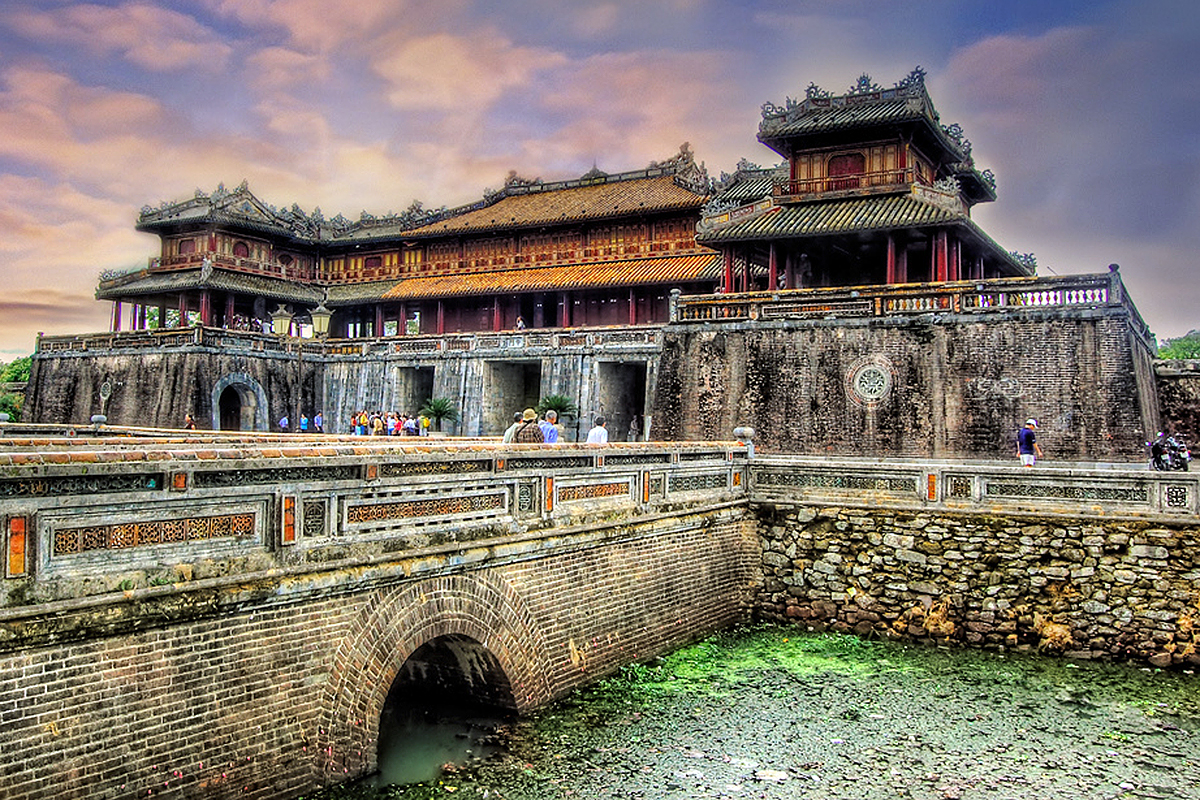
The Hoang Thanh is the most important part of the Imperial City
The sprawling complex in Hue was where the Emperors and his relatives lived and conducted all their business. A part of the Citadel is known as “The Forbidden Purple City”, which is much like China’s Forbidden City – the place reserved for only the most important people of the nation. The Forbidden City was situated behind the Throne Palace and consisted of 50 architectural constructions of different sizes and 7 gates. Although it is slow and has not done much, restoration progress turned some spots to look exactly like the original ones. Wandering around, travelers can still see some of the imposing city gates, walls, beautifully restored halls, or the ancient moat that is fed by the Perfume River. The feudal architecture of Dai Cung Mon (the Grate Palace), Can Chanh Palace (Emperor’s daily working place), Can Thanh (Emperor’s private palace), Khon Thai Residence (Queen’s private apartment), Duỵet Thi Duong house (Royal theater), Thuong Thien (Royal kitchen for the Emperor), Thai Binh Lau (Emperor’s reading room), … are something special that has been luring countless visitors.
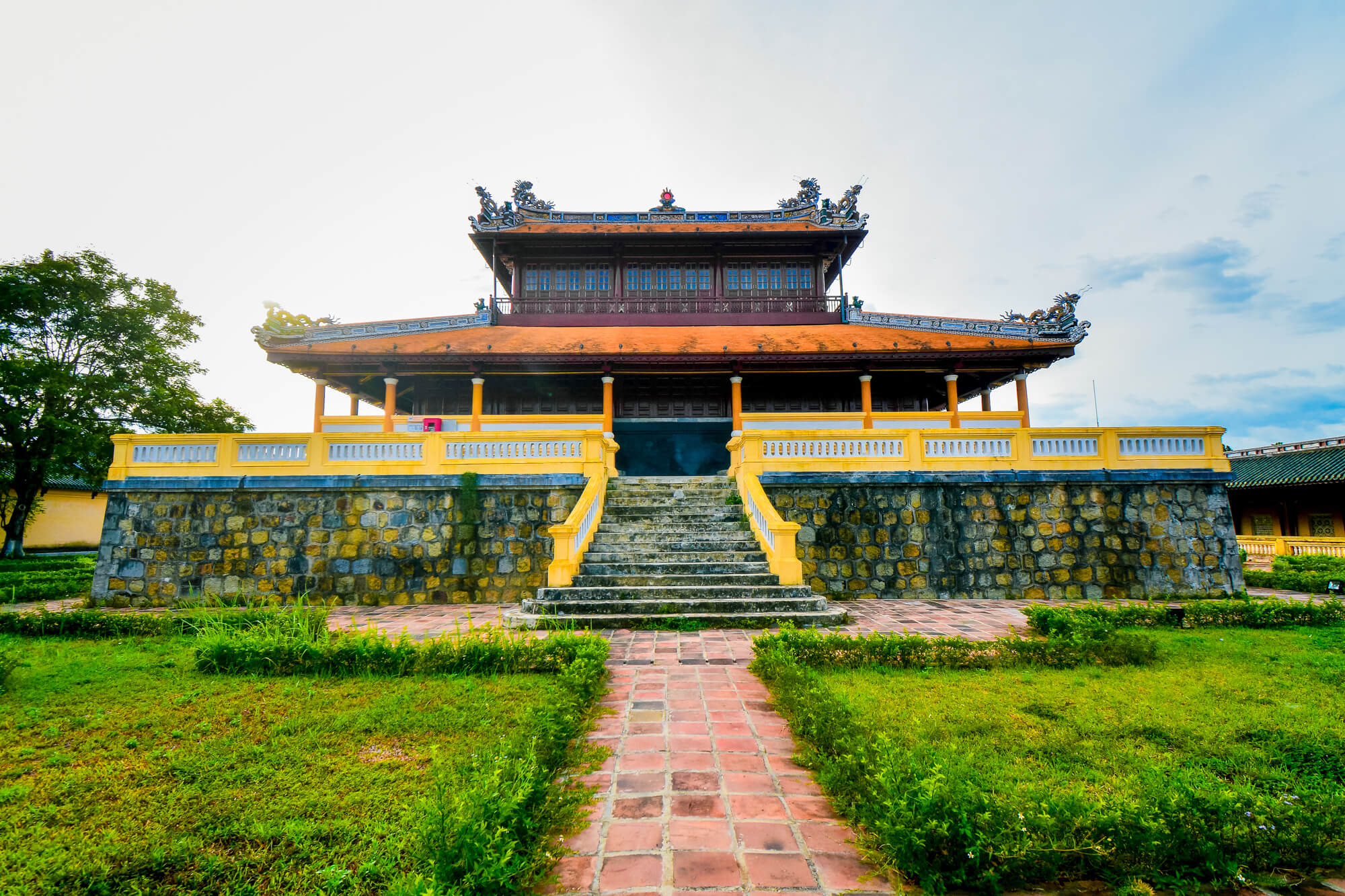
Hue Museum of Royal Fine Arts
Thanks to serving many former dynasties, the Citadel has many beautiful tombs, which the Emperors elaborated dedicating to themselves. The three most popular tombs are Tu Duc, Khai Dinh, and Minh Mang, which are situated along the Perfume River with most of the other survived tombs. Carefully look at the architecture design, you will be fascinated by how ancient royal buildings were beautifully created by ancient artists.
After wandering around, don’t forget to visit Thien Mu pagoda overlooking the Perfume River. Being built in the mid-1800s, the 7-tiered tower stands still throughout wars and history (unlike the complex being destroyed and rebuilt several times since then), which made Thien Mu become the symbol of Hue city. Visiting Thien Mu early in the morning to beat the crowds, you can see young monks in training, doing duties and studies.
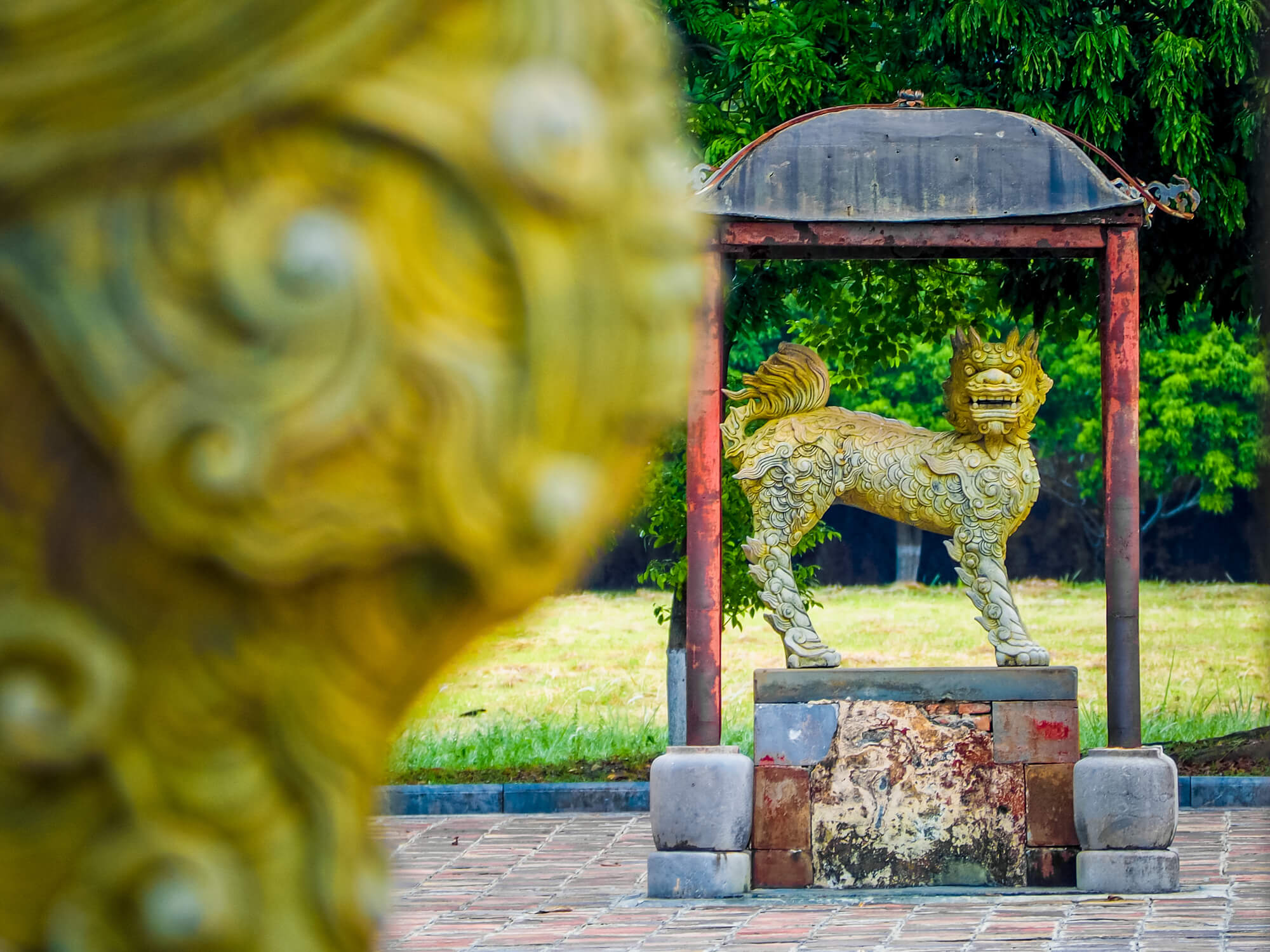
Decors in Hue Citadel
Lasting for more than 200 years and consisting of over 100 fascinating architectural works, the Hue Imperial Citadel is an ideal spot for travelers who seek cultural beauty as well as the important history of Vietnam. If you are coming from Hanoi or Ho Chi Minh city, first you will need to get to Hue’s Phu Bai domestic airport, which is located 15km away from the city center. Many buses and transfer coaches at the airport can take you to the city at a cheaper price compared to taxis. If you are coming from Danang, there are 2 options: jump on a 6-hour train passing Hai Van Pass and Lang Co Bay, which offers extravagant sightseeing moments, or just drive/ ride to Hue, which takes only about 2-3 hours. Once there, it is pretty easy to travel around either by bus, taxi/ private car, or motorbike.
You might also like Hue Useful local tips
Trip that visit Hue Citadel
